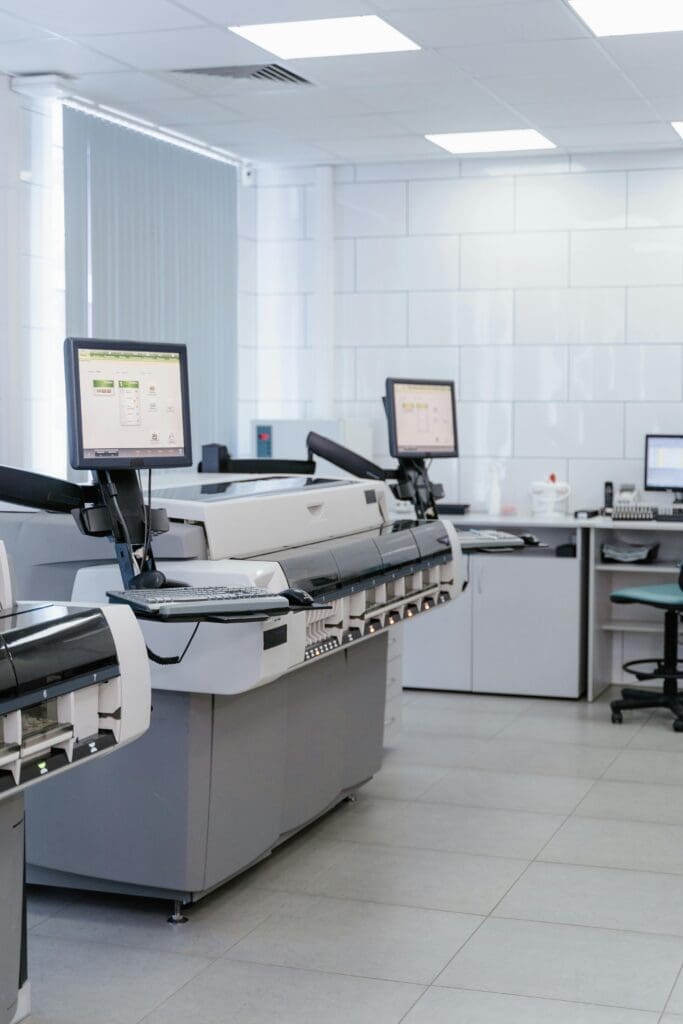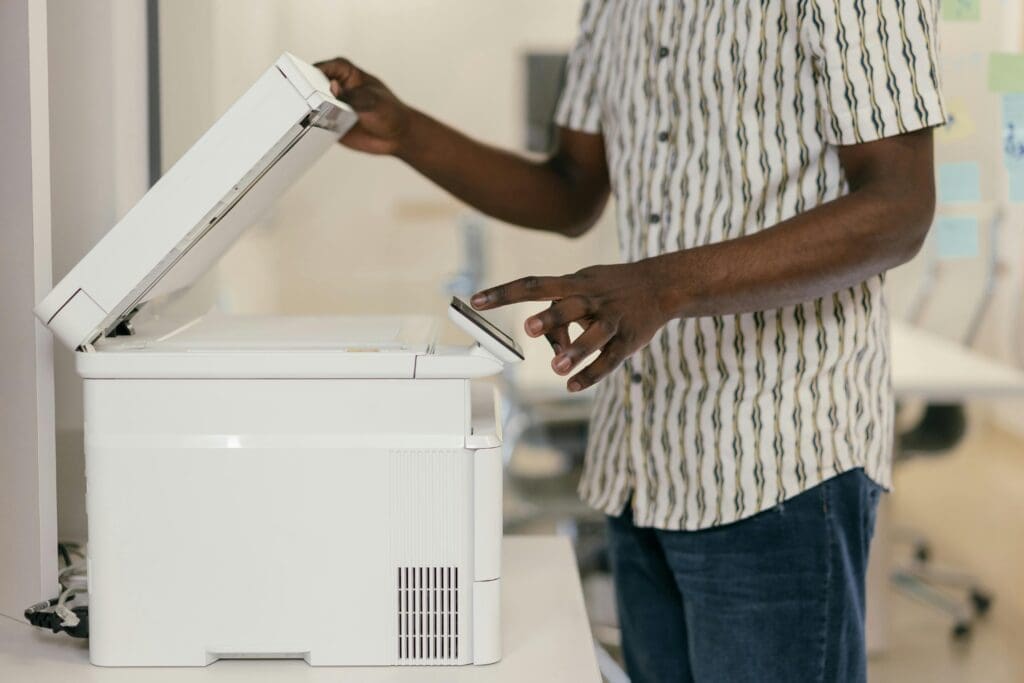A Comprehensive Guide to Buying Used Commercial Printers in the UK
Purchasing used commercial printers can be a cost-effective and smart investment for businesses aiming to enhance their printing capabilities without the financial burden of buying new equipment. However, to make the most of your purchase, it’s crucial to evaluate several factors carefully. Here, we’ll walk you through essential considerations, ensuring you find reliable, high-performing used commercial printers suited to your business needs.

- Determine Your Printing Requirements
Before beginning your search, clearly outline your business needs. Are you focusing on producing high-volume prints, wide-format graphics, or specialised materials? Identifying whether you require digital printers, offset presses, or wide-format printers is essential. Additionally, think about whether supplementary equipment like binders or cutters is necessary. Taking time to assess your current workload and future demands ensures you invest in a printer that meets both immediate and long-term goals, avoiding unnecessary expense or inefficiency.
- Research Printer Models and Features
Thorough research is crucial when buying used commercial printers. Dive into the specifications, performance ratings, and user reviews of various models. Speak to industry peers who have experience with specific printers and learn about any common issues. Familiarise yourself with features that add value, such as advanced colour calibration, speed, or energy efficiency. This knowledge not only helps you avoid models prone to breakdowns but also empowers you to select a machine that aligns with your business objectives.
- Inspect the Machine’s Condition
Conducting a detailed inspection is vital when purchasing second-hand printers. Examine the equipment for visible wear, rust, or damage and request its maintenance records. Ideally, test the printer to evaluate its performance, including print quality, speed, and noise levels. If you’re unsure about inspecting the machine yourself, hire a professional technician to assess its condition. A thorough inspection helps you avoid costly repairs down the line and ensures the printer is ready to handle your workload. The Commercial Trader allows sellers to display multiple photos of their products, however you can always reach out to the seller using the contact form to ask for additional photographs.
- Verify the Seller’s Credibility
The reputation of the seller plays a significant role in ensuring a successful purchase. Whether you’re buying from a specialist dealer or an individual seller, check customer reviews, ask for references, and confirm that the seller provides accurate information about the printer’s history. Reputable sellers often offer warranties or guarantees, adding an extra layer of security to your investment. Opt for a dealer or supplier who is transparent and reliable to reduce risks associated with buying used commercial printers. Here at The Commercial Trader we use trusted suppliers- both individuals and dealership. It’s always important to use the contact information for the seller detailed next to your chosen product to ask questions before your purchase.
- Understand the Printer’s History
Every used printer has a story, and understanding its history can offer insights into its condition and potential lifespan. Ask questions about its previous usage, such as the types of jobs it handled and the environment it operated in. A printer that was lightly used in a low-demand setting is likely to have a longer lifespan compared to one subjected to heavy-duty operations. Additionally, determine whether the machine has been refurbished, as this could impact both performance and value.
- Evaluate Age Versus Cost
While older printers may come with a lower price tag, they often require more maintenance and could lack modern features. Newer models, though pricier, tend to offer better efficiency and compatibility with updated software. Balance your budget against the machine’s age, performance capabilities, and expected lifespan. Another key consideration is whether the manufacturer still supports the model with spare parts and technical assistance, which can significantly impact the total cost of ownership.
- Ensure Availability of Spare Parts and Services
Even well-maintained used commercial printers will require servicing or replacement parts over time. Before purchasing, confirm that parts for the model are readily available, either from the manufacturer or third-party suppliers. Research local technicians or service providers who are familiar with the printer’s make and model. A printer that’s difficult to maintain or repair can lead to prolonged downtime and additional expenses, so this step is crucial.
- Factor in the Total Cost of Ownership
When assessing the cost of used commercial printers, consider more than just the initial purchase price. Account for shipping, installation, training for your staff, and any immediate repairs or upgrades the machine may require. Additionally, think about long-term costs such as maintenance, energy consumption, and supplies. While a cheaper printer may seem like a bargain, a more efficient model with lower upkeep costs could save money in the long run.

Making an Informed Decision
Buying used commercial printers is an excellent way to upgrade your business’s capabilities while staying within budget. By determining your needs, thoroughly researching available options, inspecting the printer’s condition, and evaluating the seller’s credibility, you can make a confident and informed decision. Always consider the printer’s history, availability of spare parts, and the total cost of ownership to ensure your purchase supports your business goals. With careful planning, investing in a used commercial printer can deliver exceptional value and help your business thrive. Check out the range of used commercial printers we have for sale on our website.

